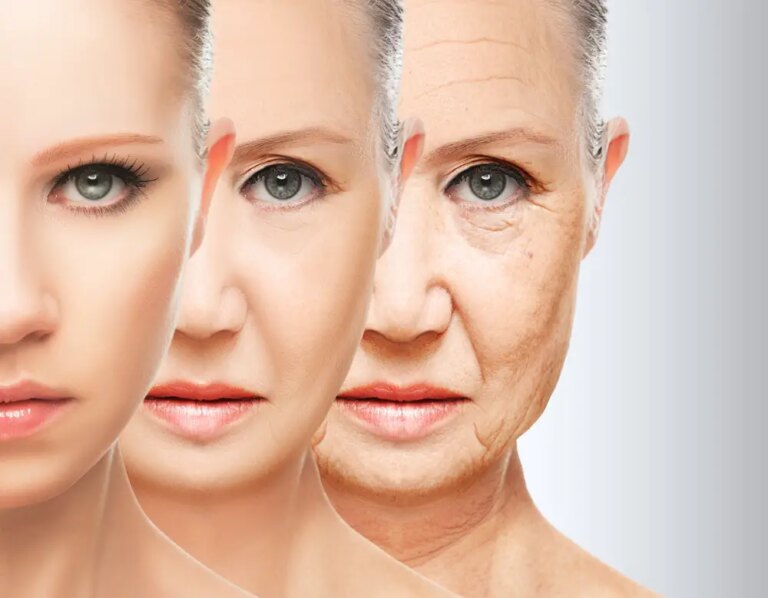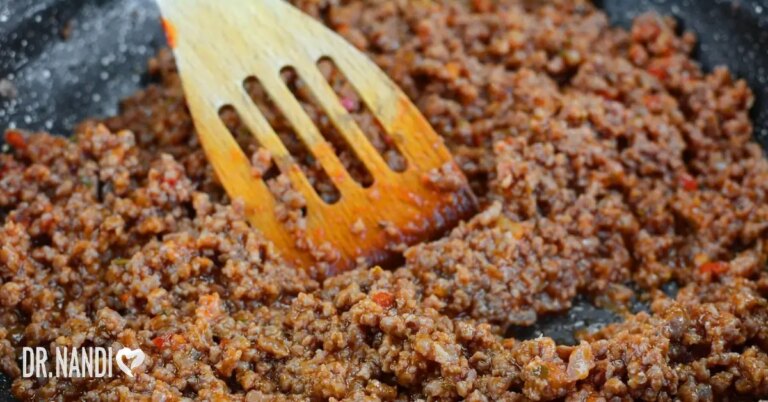Vitamin D and Gut Microbiome
Several studies have suggested that a person’s vitamin D levels significantly impact overall, long-term health. A study from the University of California San Diego explored the connection between the human gut microbiome and a person’s levels of active vitamin D. The research team learned that there is an essential link between the two. Without a healthy gut, vitamin D may not work. (1, 2)
This study also contributed to a new understanding of vitamin D and its measurement. Although vitamin D can appear in different ways in the body, we usually only count one of its forms because it’s the only one that seems on standard blood tests. This form is an inactive precursor, which the body can store. But to use it, the body must metabolize the precursor form of vitamin D into an active form. (1, 2)
What Are the Benefits of a Healthy Gut?
All stomach chemicals, save fiber, are transformed into simple molecules and taken into the bloodstream. Only a healthy digestive system allows this to happen. A healthy gut has beneficial bacteria and immune cells that deter harmful organisms such as germs, viruses, and fungi. Nerves and endocrine systems link the gut and brain, which aids in the maintenance of general health and well-being. (5)
How does Gut Microbiota Benefit the Body?
The microbial community encourages the immune system, deconstructs potentially harmful food chemicals, and creates some vitamins and amino acids, including B vitamins and K. The critical enzymes for vitamin B12 formation are only present in bacteria, not plants or animals.
A healthy person’s microbiota will protect them from harmful bugs entering the body via contaminated water or food, such as cholera. (5)
Gut Health Problems: What Are the Signs?
Digestive issues such as abdominal discomfort, bloating, loose stools, constipation, heartburn, nausea, or vomiting affect everyone at some point. When symptoms persist despite treatment, it might indicate the presence of a more severe underlying condition that requires medical attention.
Blood in the stool, black stool (an indication of gut bleeding), severe vomiting, fever, severe stomach aches, difficulty swallowing meals, throat or chest discomfort when eating, or jaundice (yellow skin or eyes) can all indicate severe inflammatory bowel disease.
Science-Based Methods for Improving Your Gut Bacteria
Your diet, among other things, impacts the types of gut bacteria in your digestive tract.
Eat a Diverse Range of Foods
Bacteria make up a large portion of your gut flora, each of which has its function in health and requires specific nutrients for development. In general, it is thought that a microbiome with many different kinds of bacteria is best. It is because the greater the number of bacteria types you have, the more medical services they may be capable of rendering. You can get a diverse microbiome by eating a lot of different kinds of food. (6, 7, 8, 9)
Eat Lots of Vegetables, Legumes, Beans, and Fruit
Fruits and vegetables are the most beneficial for maintaining a healthy microbiome. They’re high in fiber, which your body can’t break down. On the other hand, bacteria in your stomach can digest fiber, which encourages their development. Beans and legumes also include a lot of dietary fiber. (13)
Eat Fermented Foods
Fermentation is the conversion of carbohydrates into alcohol by yeast or bacteria. Many of these meals are high in lactobacilli, a microbe that may benefit your health. According to research, people who consume a lot of yogurts have more lactobacilli in their intestines. Additionally, they have fewer Enterobacteriaceae, bacteria linked with inflammation, and various chronic illnesses. Several studies have also shown Yogurt consumption to improve intestinal bacteria and decrease symptoms of lactose intolerance. Furthermore, yogurt may help modify the microbiome’s functionality and composition. (14)
Eat Prebiotic Foods
Prebiotics are carbohydrates or fibers that encourage the growth of good bacteria in the gut. They’re mostly fiber or complex carbs that human cells can’t break down. Certain microorganisms in the stomach instead digest and use them as energy. Various foods may have prebiotics, including fruits, vegetables, and whole grains.
Because resistant starch is non-digestible, it may also be prebiotic. This form of starch is not absorbed in the small intestine and instead goes to the large intestine, where the microbiota breaks it down. Prebiotics has been shown in multiple studies to encourage the development of various beneficial bacteria, such as Bifidobacteria.
Eat Whole Grains
Non-digestible carbohydrates such as beta-glucan are present in whole grains. The small intestines don’t absorb these carbs and instead travel to the large intestine, where they aid the development of beneficial microorganisms. Whole grains have been shown in studies to encourage Bifidobacteria, lactobacilli, and Bacteroid in humans.
Eat Plant-Based Diet
Diets containing animal products promote the growth of various intestinal bacteria, whereas plant-based diets promote the formation of different species. Several studies have demonstrated vegetarian diets benefit the gut microbiota, possibly because of their high fiber content.
Increase Your Intake of Probiotics
Probiotics are live microorganisms that provide a particular health advantage when consumed. In most cases, probiotics do not permanently colonize the intestines. They may still benefit your overall gut health by altering the microbiome’s composition and assisting with metabolism.
Probiotics had little effect on the gut microbiome composition of healthy individuals, according to a meta-analysis of seven studies. However, some evidence is that probiotics may alter the gut microbiota in those with specific diseases.
What is Vitamin D, and What Does It Do?
Vitamin D is a crucial vitamin for optimal health. It aids in the absorption of calcium, one of the main minerals required to form strong bones. Together, vitamin D and calcium prevent osteoporosis, a disease that causes bones to thicken and weaken, making them more prone to fracture. Various bodily functions require Vitamin D. Its use is necessary to keep your muscles and nerves moving. Vitamin D aids in the prevention of bacterial and viral infections by boosting the immune system’s ability to fight them.
What Foods Provide Vitamin D?
Vitamin D isn’t usually in food. Most of the vitamin D consumed by people in the United States comes from fortified foods. Look for vitamin D levels on the Nutrition Facts label of a meal or beverage.
- There is approximately three mcg (120 IU) of vitamin D in every cup of milk in the United States. Soy, almond and oat milk are fortified in much the same way as traditional dairy products. Cheese and ice cream, however, are rarely, if ever, supplemented with vitamins.
- Food items such as cereal, orange juice, yogurt, margarine, and margarine contain vitamin D.
- Fatty fish (such as trout, salmon, tuna, and mackerel) and fish liver oils are excellent natural sources of vitamin D.
- Beef liver, egg yolks, and cheese contain low amounts of Vitamin D.
- It is well known that mushrooms are an excellent source of vitamin D. To improve the vitamin D content of some mushrooms, they have been exposed to ultraviolet light.
Measuring Vitamin D
Deborah Kado, MD, is a senior study author and director of the Osteoporosis Clinic at UC San Diego Health. “We were surprised that microbiome diversity — the variety of bacteria types in a person’s gut — was closely associated with active vitamin D, but not the precursor form,” Kado told UC San Diego News. “Greater gut microbiome diversity is thought to be associated with better health in general.” (1)
Kado believes that only measuring the precursor form of vitamin D is the reason for disparities in studies on vitamin D and health. Many studies have demonstrated that low vitamin D levels are connected to an increased risk of heart disease, cancer, and other diseases. But a large randomized clinical trial with 25,000 subjects found that vitamin D supplements don’t affect these or different health outcomes. (1)
“Our study suggests that might be because these studies measured only the precursor form of vitamin D, rather than an active hormone,” Kado said to UC San Diego News. “Measures of vitamin D’s formation and breakdown may be better indicators of underlying health issues, and who might best respond to vitamin D supplementation.” (1)
How Much Vitamin D Do I Need?
Age determines the quantity of vitamin D you need each day. The following are the recommended daily dosages in micrograms (mcg) and International Units (IU): (3)
| Life Stage | Recommended Amount |
| Birth to 12 months | 10 mcg (400 IU) |
| Children 1–13 years | 15 mcg (600 IU) |
| Teens 14–18 years | 15 mcg (600 IU) |
| Adults 19–70 years | 15 mcg (600 IU) |
| Adults 71 years and older | 20 mcg (800 IU) |
| Pregnant and breastfeeding teens and women | 15 mcg (600 IU) |
Active Vitamin D and Microbiome Diversity
The UC San Diego study involved 567 male participants whose average age was 84 years. The participants lived in six cities in the United States and were described as physically active. The majority of the men reported taking vitamin D supplements. (1, 2)
The research team analyzed the participants’ blood and stool samples and found a connection between active vitamin D and intestinal microbiome diversity. They also noticed that the men with the highest vitamin D levels more often had 12 specific types of bacteria in their gut microbiomes. (1, 2)
The men living in the sunniest city involved in the study, San Diego, CA, had the most precursor form of vitamin D. However, there was no connection between the amount of sun exposure in the cities where the participants lived and their levels of active vitamin D. (1, 2)
“It seems like it doesn’t matter how much vitamin D you get through sunlight or supplementation, nor how much your body can store,” Kado stated. “It matters how well your body can metabolize that into active vitamin D, and maybe that’s what clinical trials need to measure to get a more accurate picture of the vitamin’s role in health.” (1)
The microbiome and vitamin D still require further research. Still, this study raises exciting possibilities in learning how our bodies can better use vitamin D to lower disease risk and improve overall health.
Can I Get Vitamin D From the Sun?
Your body creates vitamin D when your bare skin is exposed to the sun. Most people obtain at least a little vitamin D this way. However, clouds, smog, age, and dark-colored skin reduce the amount of vitamin D produced by your skin. Additionally, through a window, your skin does not create vitamin D.
UV radiation can cause skin cancer; therefore, you should limit your time in the sun. Although sunscreen prevents vitamin D synthesis, health experts advise sunscreen with an SPF of 15 or higher outdoors for more than a few minutes to avoid vitamin D deficiency.
Discover other gut-friendly food. Get a FREE copy of my Superfood Cookbook.
References:
- Study Reveals Connection Between Gut Bacteria and Vitamin D Levels (ucsd.edu)
- Vitamin D metabolites and the gut microbiome in older men | Nature Communications
- Vitamin D – Consumer (nih.gov)
- The Microbiome | The Nutrition Source | Harvard T.H. Chan School of Public Health
- What is ‘gut health’ and why is it important? (ucdavis.edu)
- Dietary effects on human gut microbiome diversity – PubMed (nih.gov)
- Gut Microbiome: Profound Implications for Diet and Disease – PMC (nih.gov)
- Diversity, compositional and functional differences between gut microbiota of children and adults – PubMed (nih.gov)
- A healthy gastrointestinal microbiome is dependent on dietary diversity – PubMed (nih.gov)
- A healthy gastrointestinal microbiome is dependent on dietary diversity – PubMed (nih.gov)
- Diet rapidly and reproducibly alters the human gut microbiome – PubMed (nih.gov)
- Diet-induced extinctions in the gut microbiota compound over generations – PubMed (nih.gov)
- Impact of increasing fruit and vegetables and flavonoid intake on the human gut microbiota – PubMed (nih.gov)
- Effects of Dietary Yogurt on the Healthy Human Gastrointestinal (GI) Microbiome – PMC (nih.gov)











 Subscribe to Ask Dr. Nandi YouTube Channel
Subscribe to Ask Dr. Nandi YouTube Channel










